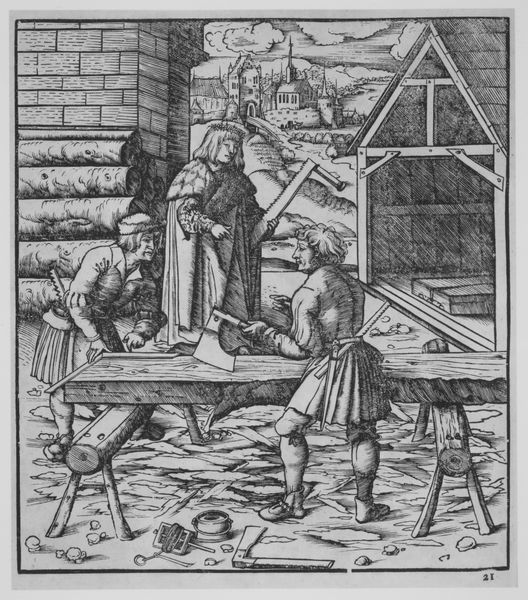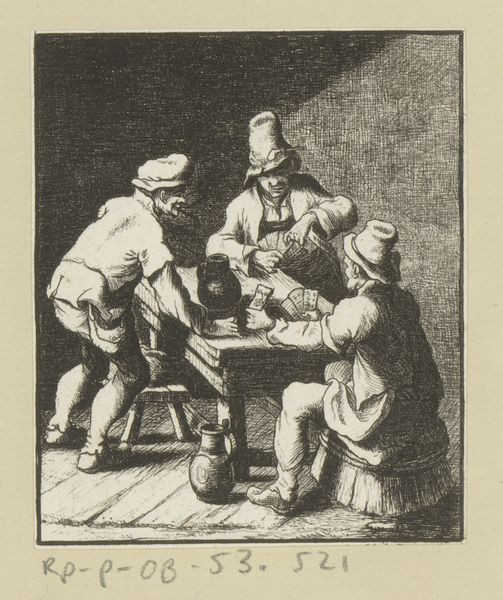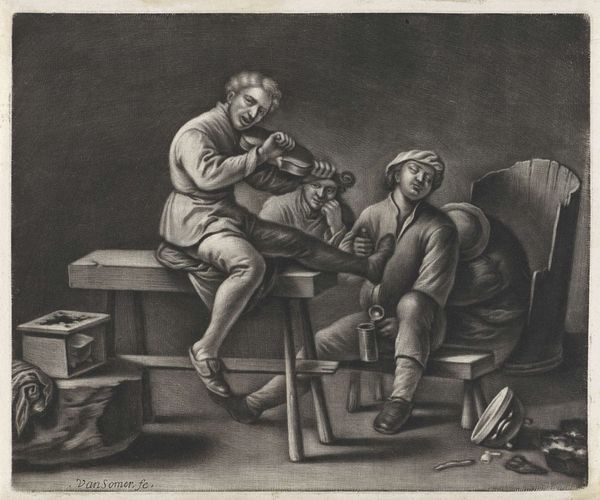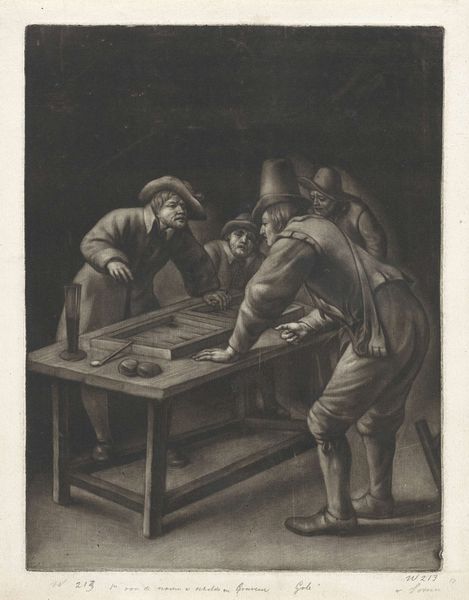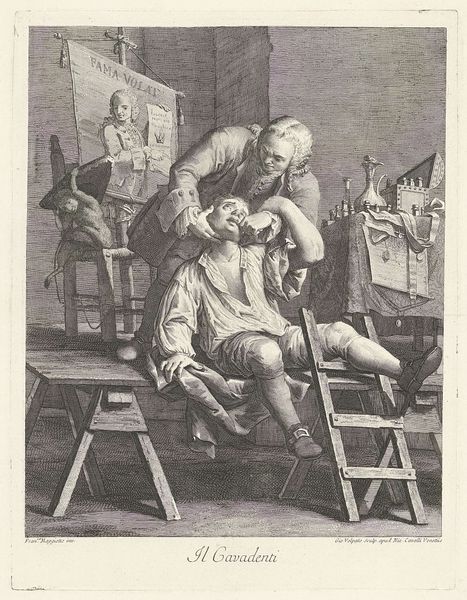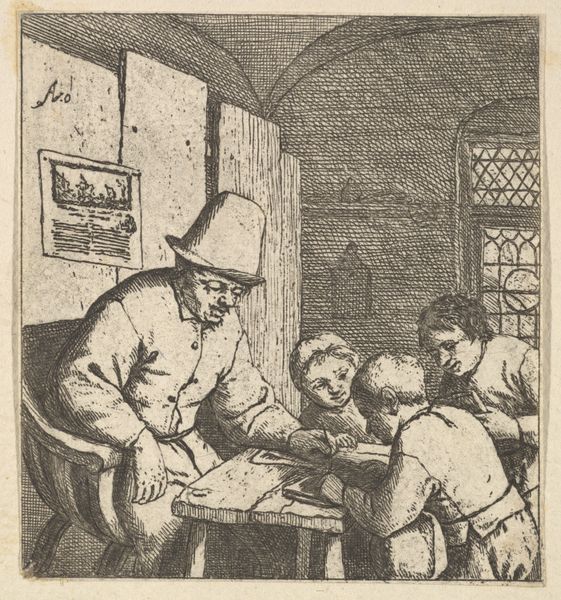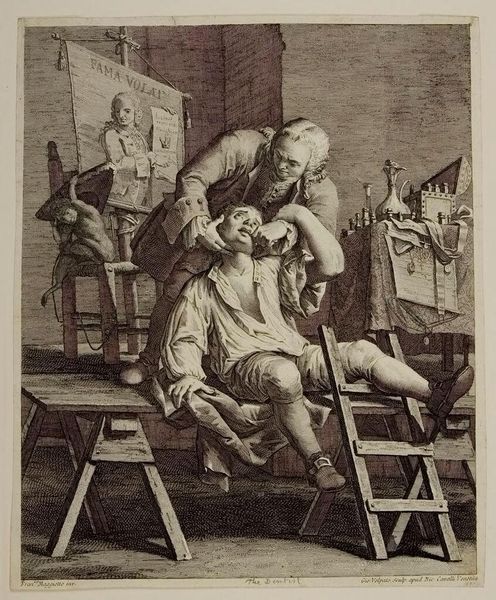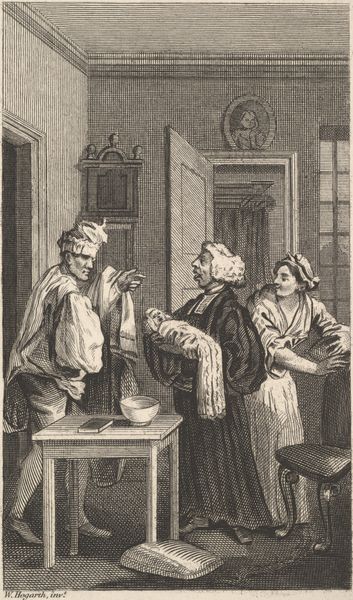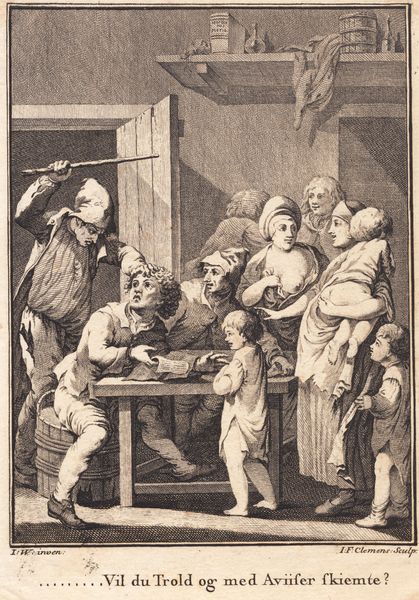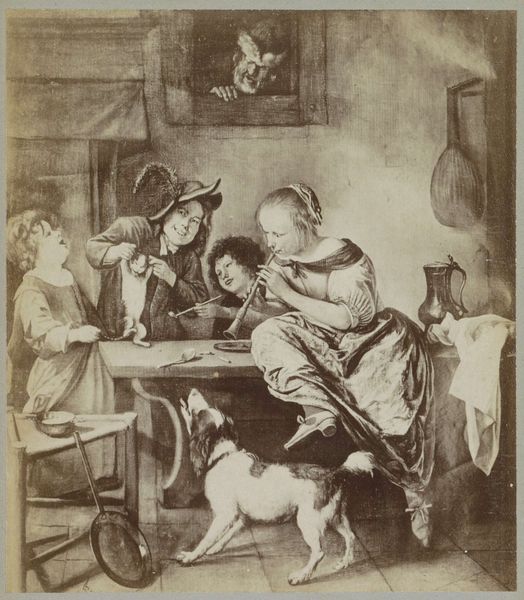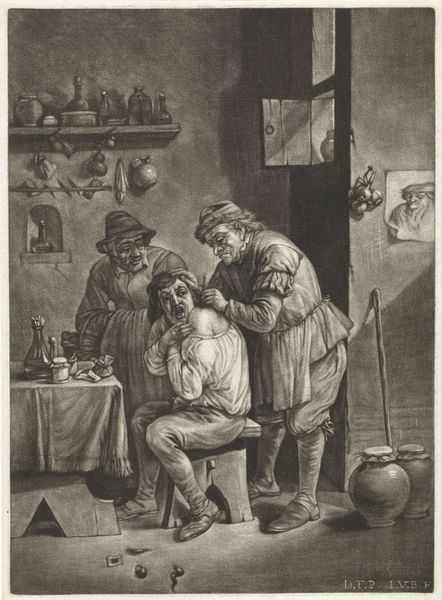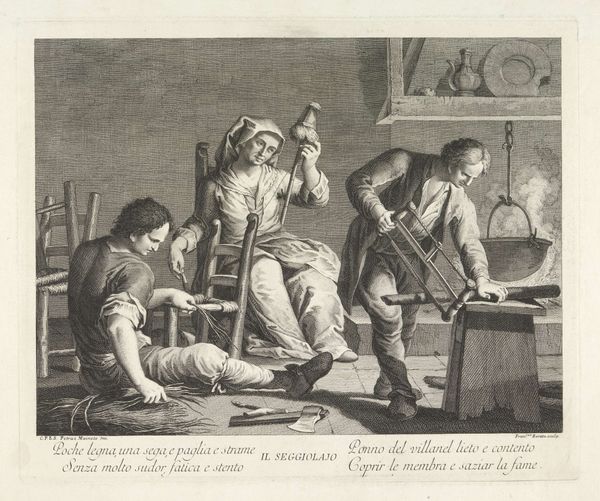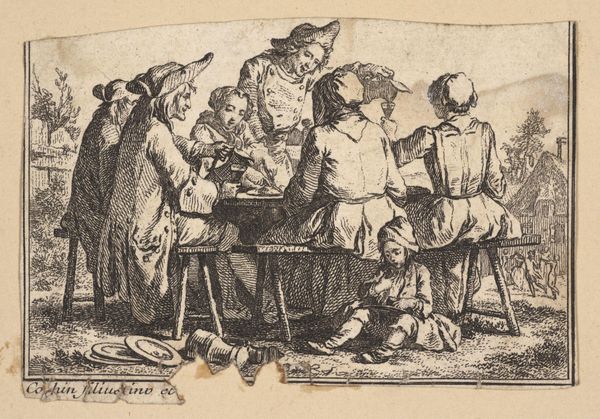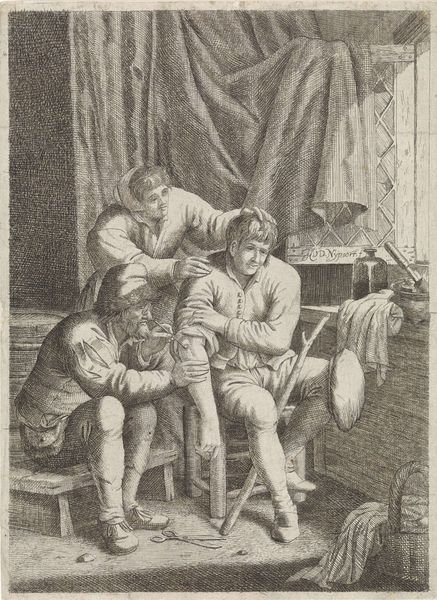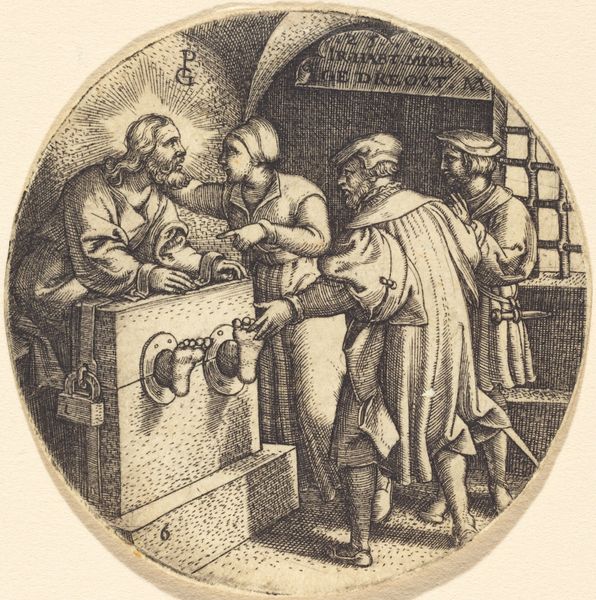
painting, oil-paint
#
narrative-art
#
baroque
#
painting
#
oil-paint
#
figuration
#
oil painting
#
genre-painting
#
realism
Copyright: Public domain
Curator: I'm immediately struck by the tension—or perhaps the desperation—radiating from this rather gloomy gathering. Editor: Yes, it's incredibly visceral, isn't it? We're looking at Giuseppe Maria Crespi's "Dice Players," an oil painting from 1747. Curator: Oh, Crespi! His genre scenes always possess such immediacy. I feel as if I've stumbled into this dimly lit room, a space heavy with anticipation and potential ruin. What draws you in initially? Editor: Well, the material reality, of course! Look at the plain table – clearly repurposed – the worn dice, the rough fabrics of their clothes. Each object tells a story of limited resources, the kind of hand-to-mouth existence where the roll of the dice could mean everything. The very pigments in this oil paint—how were they sourced, by whom were they ground? That interests me. Curator: I appreciate that focus on the everyday objects elevating themselves, but I get more interested in the expressions, that palpable mix of anxiety and grim hope as they watch their fortunes hinge on chance. Editor: And what do you think informs these specific facial expressions and body language we are witnessing? Curator: It's pure humanity distilled into a single moment, capturing our flawed selves when faced with temptation. One guy, at the rear, seems particularly strung out. His contorted hands are positioned like the dice themselves! The subdued palette serves the drama beautifully too, drawing our focus onto their faces. There's an implicit moral commentary, obviously— Editor: Of course, and Crespi likely understood that making "genre" paintings allowed his studio to sustain creating religious paintings too. What was the patronage system incentivizing these artistic outputs and outcomes? I believe the details of process and economic sustainability need more analysis. Curator: Perhaps so. But I love how the window in the background only grants them that sliver of light and a view to… bars, even, hinting to their possible fate and the potential wages of recklessness. The game’s composition reflects on real social implications: it could almost represent the precarious economic mobility during the period itself, wouldn't you agree? Editor: I suppose, but maybe let's zoom out. For me, seeing this and thinking about today's economy really drives home the unchanging realities of labor. I keep seeing connections among making art, making money, and making lives within societal confines. The work on the canvas shows the sweat behind every gamble in real life. Curator: True! Crespi certainly gets you thinking beyond just aesthetics! He compels viewers to face an old mirror that somehow remains so relevant today.
Comments
No comments
Be the first to comment and join the conversation on the ultimate creative platform.
